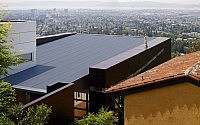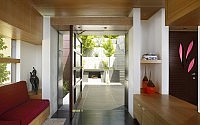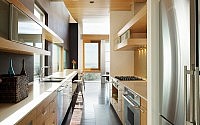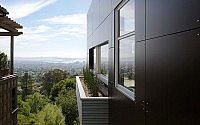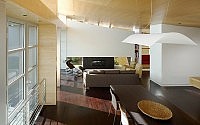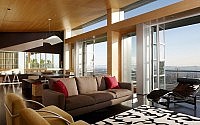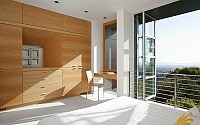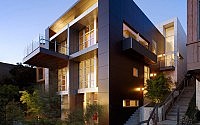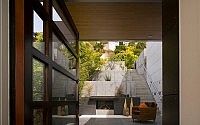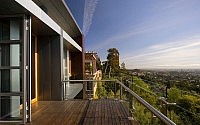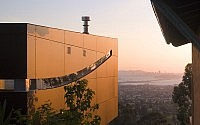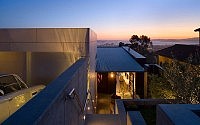Stunning Berkeley Residence by Charles Debbas Architecture
Located in the Berkeley/Oakland hills this contemporary residence designed by Charles Debbas Architecture overlooks the entire San Francisco Bay Area offering panoramic views from every room and vantage point.

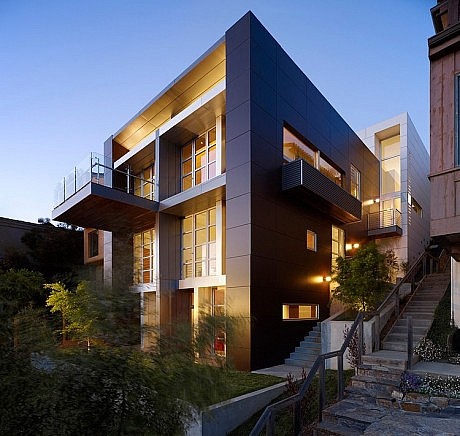

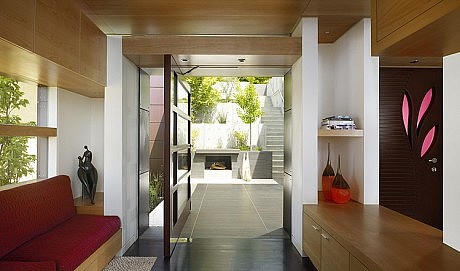
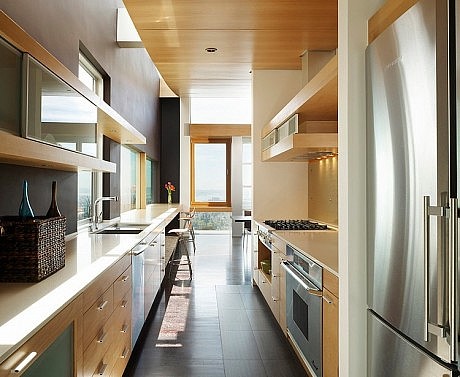
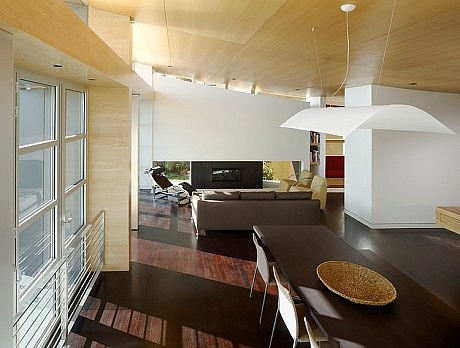
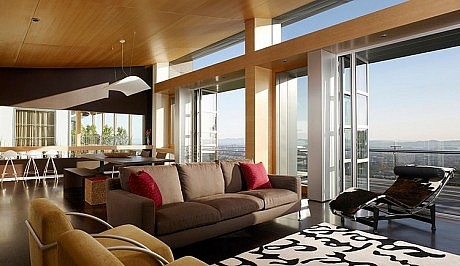
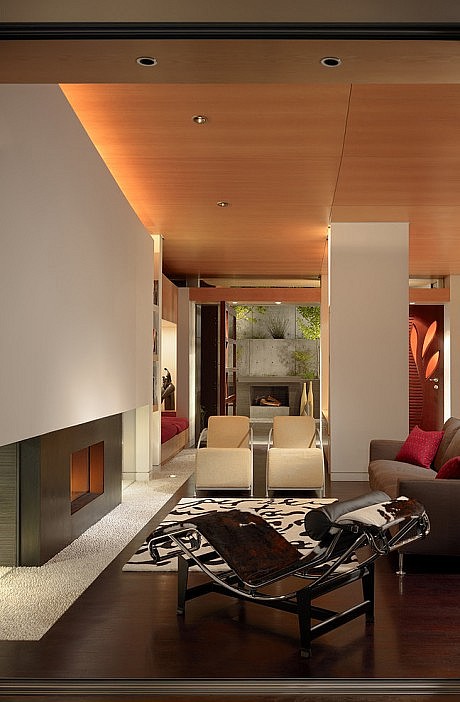
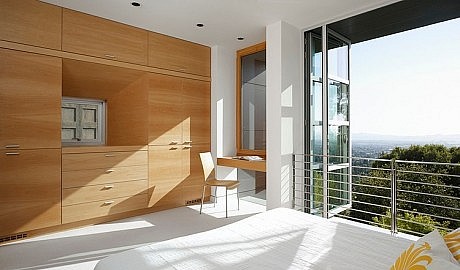


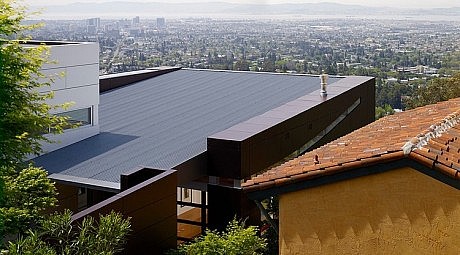
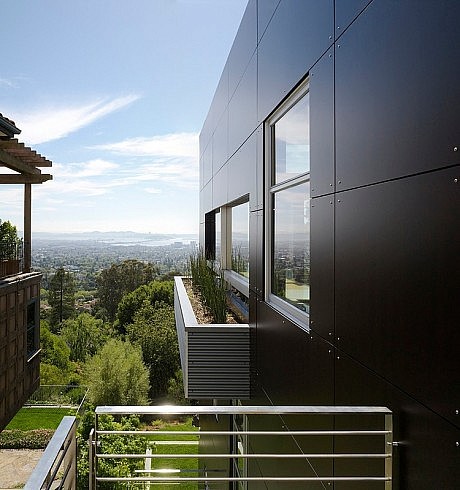

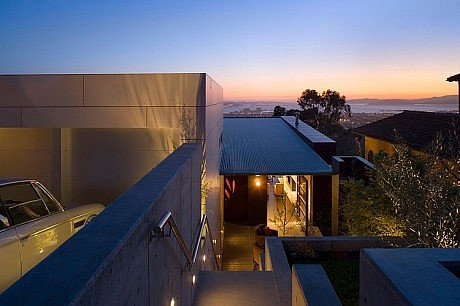
Description by Charles Debbas Architecture
Sunken down into the hill, it allows for direct level access to a back yard and opens up a generous entry courtyard to the house as well as a series of level gardens as one makes their way through the house, challenging the notion of perched hillside home, detached and offering no direct access and dialog with the land and their surroundings. The whole western façade slide open making the indoor spaces one with the Bay.
The main idea behind the concept was to puncture and carve simple volumes with glass, views and materials and sculpt light and space into a soul enriching experience, one that, like a sundial, constantly redefines the character of the house, day to day and hour by hour.
Although modern, it conveys feelings of something very familiar through the choice of materials, colors, day lighting and the size and balance of the spaces within and without. In defiance to the belief that contemporary homes are cold and uninviting, the house is warm, very intimate and most of all quiet in every sense of the word.
The most magical times being early morning when the haze, dew and bird songs transport you out to the country, and early evening when the rolling fog interwoven with the spectacular sunset lights, break the postcard stillness of the incredible views.
When I approached this design, solar and sustainable issues were not at the forefront of my thought process, but were omnipresent in the way they weaved their way effortlessly into the essence of the house. the sinking of the structure into the earth to engage the insulation properties of the land, and two, the inclusion in the design of light shelves on the west façade (view façade) to prevent direct sun and heat from entering the house while enjoying uninterrupted views of the Bay.
As a student of Architecture at Berkeley, back in the days when solar energy was an integral part of an architect’s education and formation, we dealt with solar and sustainable issues as essential elements in the design or lack thereof, and construction process. Their failing then, in addition to the drop in oil prices and the short sightedness of many politicians, was that they always assigned good design a back seat or no seat to their technical dimension. Solar in many ways came to be associated with bohemian architecture giving the mediocrity of post modernism room to thrive. In today’s revival of energy consciousness many Architects and builders are jumping on the bandwagon not because they believe to their core of the priceless value of this rebirth but because it is a sexy, many think new, concept to be associated with.
When I approached this design, as I do all my work, solar and sustainable issues were not at the forefront of my thought process, but were omnipresent in the way they weaved their way effortlessly into the essence of the house. The house in many ways is designed along passive solar teachings engrained in me from those early days I mentioned above, thus, one, the sinking of the structure into the earth to engage the insulation properties of the land, and two, the inclusion in the design of light shelves on the west façade (view façade) to prevent direct sun and heat from entering the house while enjoying uninterrupted views of the Bay.
The house exterior was designed to maximize the use of renewable materials. The cladding panels on the garage portion are concrete fiberboard (green) from Switzerland , the house itself is clad with resin fiberboard that is made to look like wood also renewable, from Holland. Most decks are tiled with ceramic slats the look like wood (again to minimize the use of real wood). The roof is powder coated metal and most of the trim is anodized aluminum to match the giant doors facing the view. I tried to make the house as “green” as possible, but my main goal was to make it as maintenance free as possible, considering the western exposure. All of the exterior materials require only a power wash every once and a while. No painting, warping, discoloration…
My interest in the careful selection of the above mentioned materials had to do with my awareness and sensitivities as a human being of the harm and destruction of precious resources that we are stripping our children of, as well as what the durability, timelessness and beauty this new and renewable palette could bring to the Design. The house is unique in that sense, not in that it made use of these materials but in the ways it used, or exploited them seamlessly to elevate the house above hype, gimmicks and sexy new-old trends.
Visit Charles Debbas Architecture
- by Matt Watts


